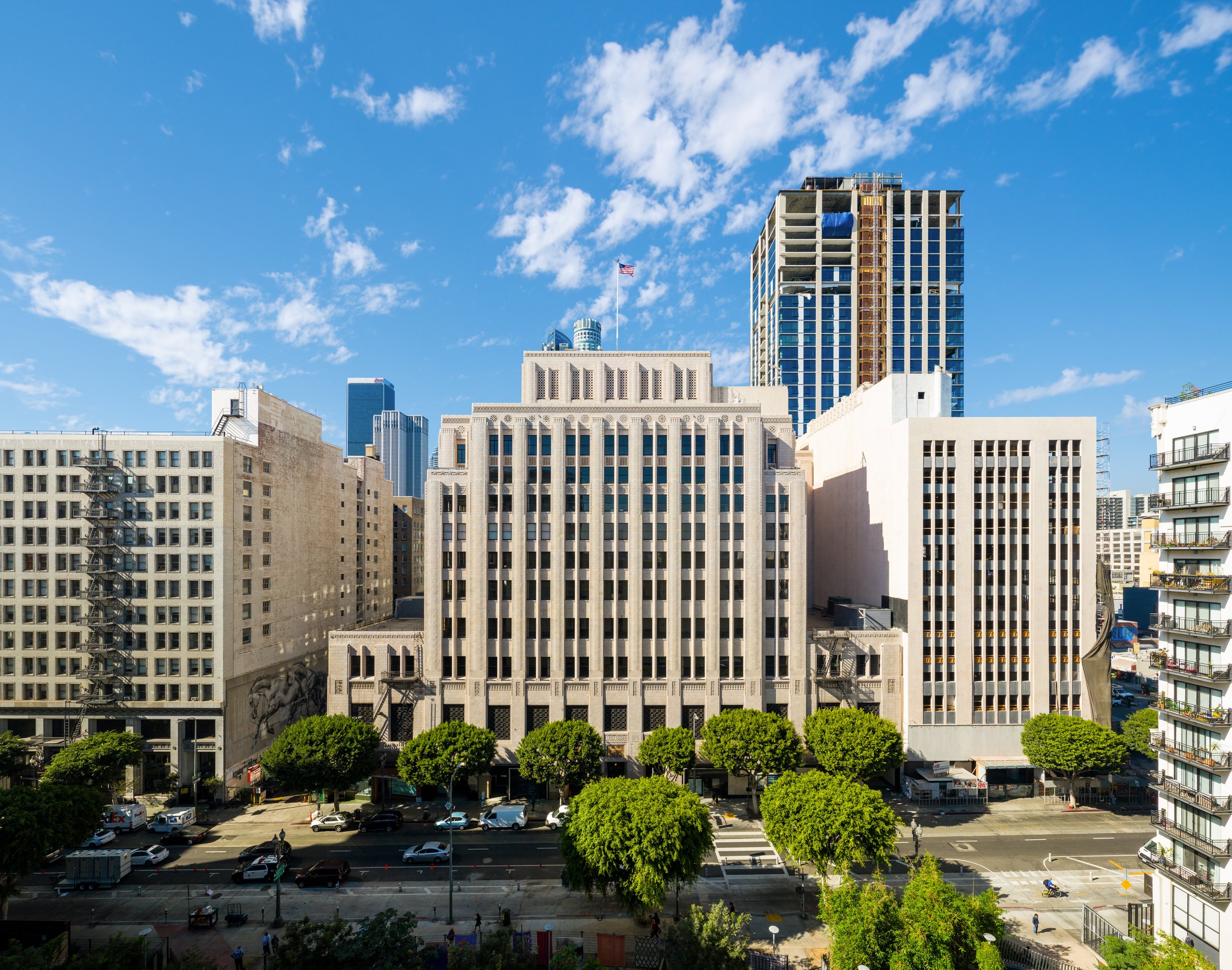Historic Preservation is Carbon Preservation
Trust Building • 433 Spring Street Los Angeles CA 90013 • Photo by Hunter Kerhart
To demo or not to demo, that is the question.
For years, when we spoke about our buildings’ carbon footprint, we focused on operational carbon related to the building’s use. Sophisticated energy modeling software, available high-performance lighting and HVAC, and low-cost solar have allowed us to design, build, and operate buildings that are carbon neutral operationally. But what about the embodied carbon and existing buildings?
Since LEED v4 launched in 2013, the LEED rating system has prioritized reducing embodied carbon with points for building life cycle impact reduction and Environmental Product Declarations (EPDs). The Building Product Declaration & Optimization (BPDO) assigns points for using products with EPD. This has driven manufacturers to disclose the environmental impact of their building materials, allowing design teams to consider embodied carbon and make informed decisions associated with their projects.
Conducting Life Cycle Assessments (LCAs) for projects is now accessible with the development of easy-to-use, open-source tools like EC3. Most carbon-intensive materials – such as concrete, steel, and insulation – have product-specific or at least industry-wide EPDs. This data enables teams to conduct an early LCA and make informed decisions regarding embodied carbon.
GAIA has worked on various historic buildings where the embodied carbon associated with demolition and rebuilding verses preserving the existing structure was considered. GAIA was able to provide data that supported the client’s decision to keep the building. Historic preservation is also carbon preservation.
One example is the Trust Building in downtown Los Angeles. Rising Realty Partners purchased and redeveloped this building with an interdisciplinary team involving ARG, Gensler, Morley Builders, and GAIA.
Instead of demolishing a historical building from 1928, Rising Realty Partners and the team saved it by revitalizing and transforming it. This process led to massive reductions in embodied carbon compared to a ground-up building, and GAIA was able to provide the metrics regarding embodied carbon.
Currently, construction is often easier and cheaper to tear down a building and start from scratch because older buildings can require a significant upgrade to the envelope, seismic, fire and life safety, and MEP systems to meet code. However, this practice doesn’t account for the embodied carbon of the existing materials and the carbon footprint of the new construction materials. By reusing the majority of The Trust Building, this project was able to drastically decrease its embodied carbon.
The structure and enclosure of The Trust Building are mainly concrete and reinforced steel, two of the highest embodied carbon footprint materials. Concrete and steel are the most carbon-intensive materials by weight and form, on average, 70-80% of this project’s structure and enclosure. Over 95% of the building was reused in the renovation.

